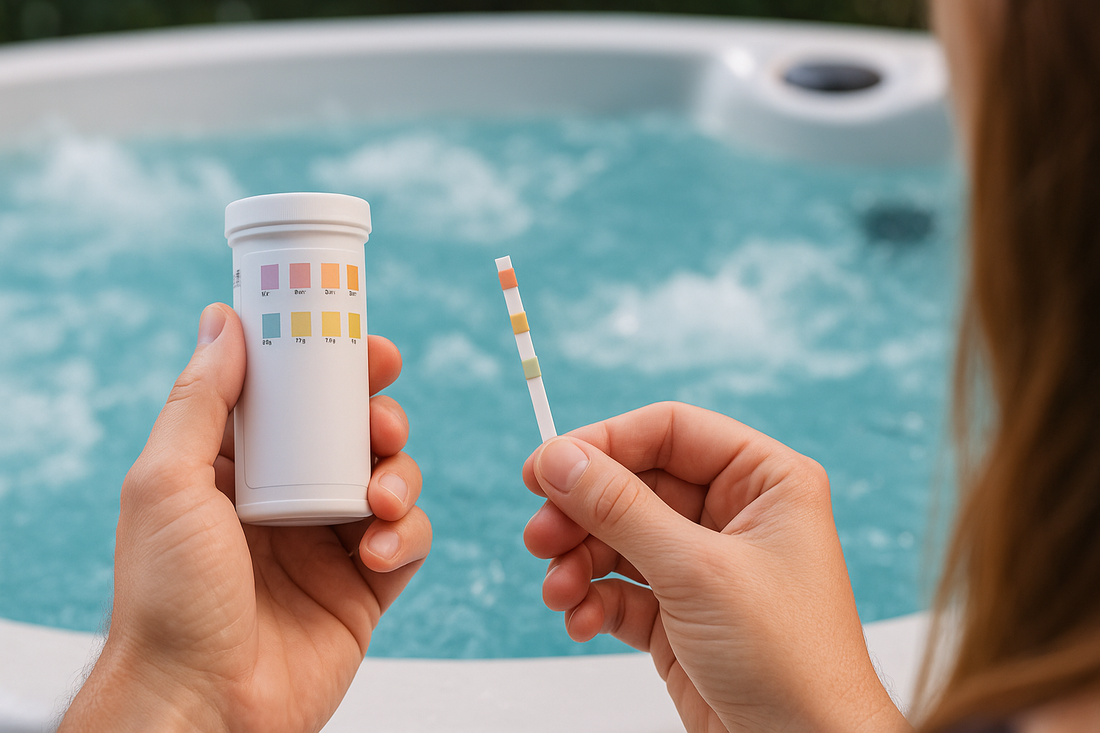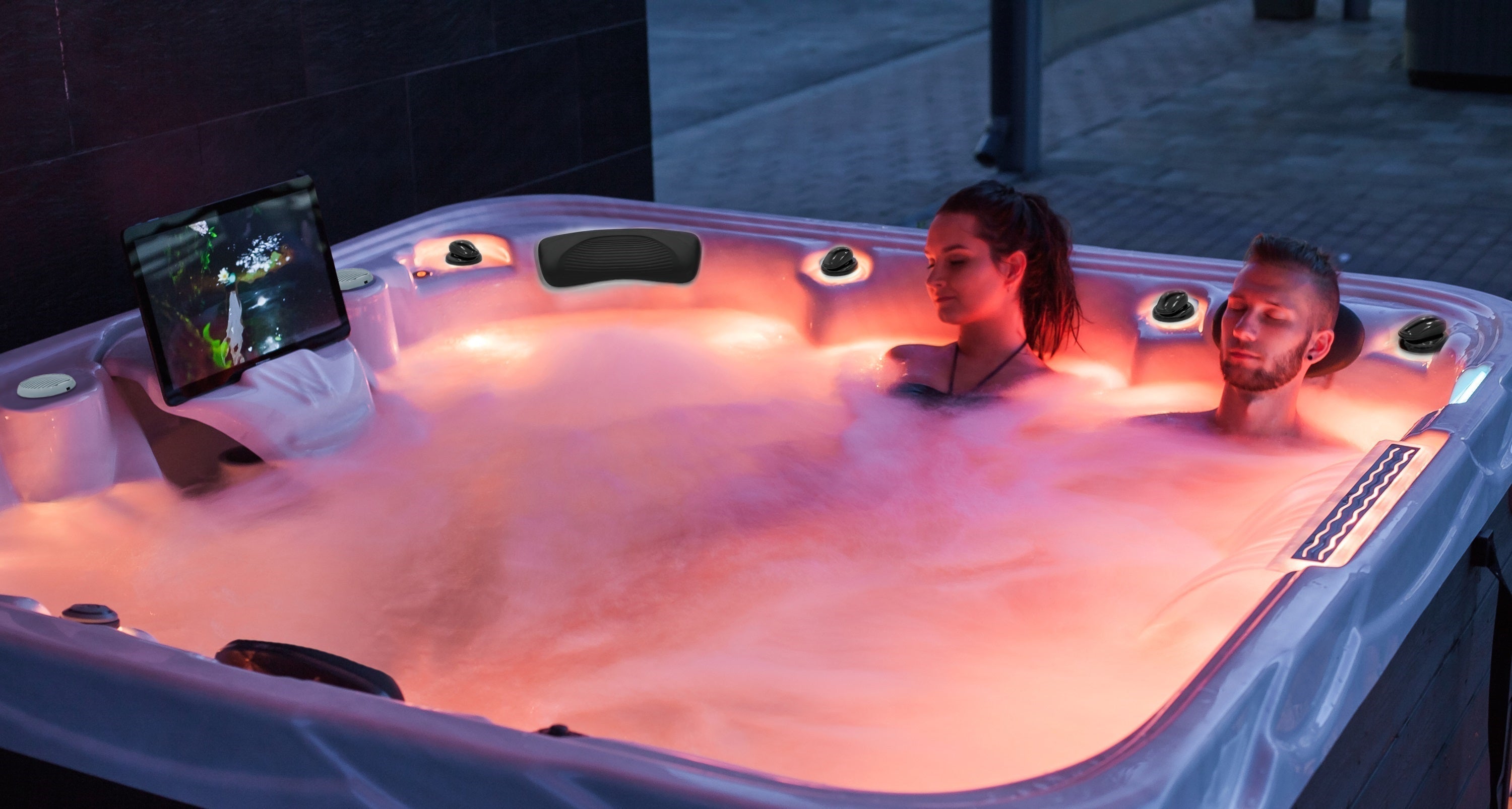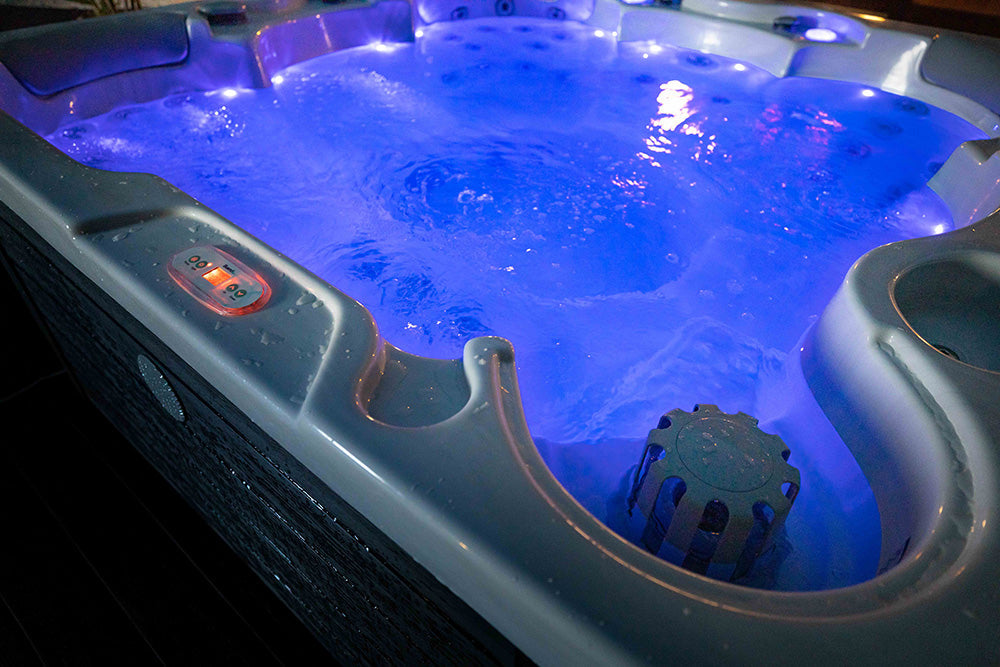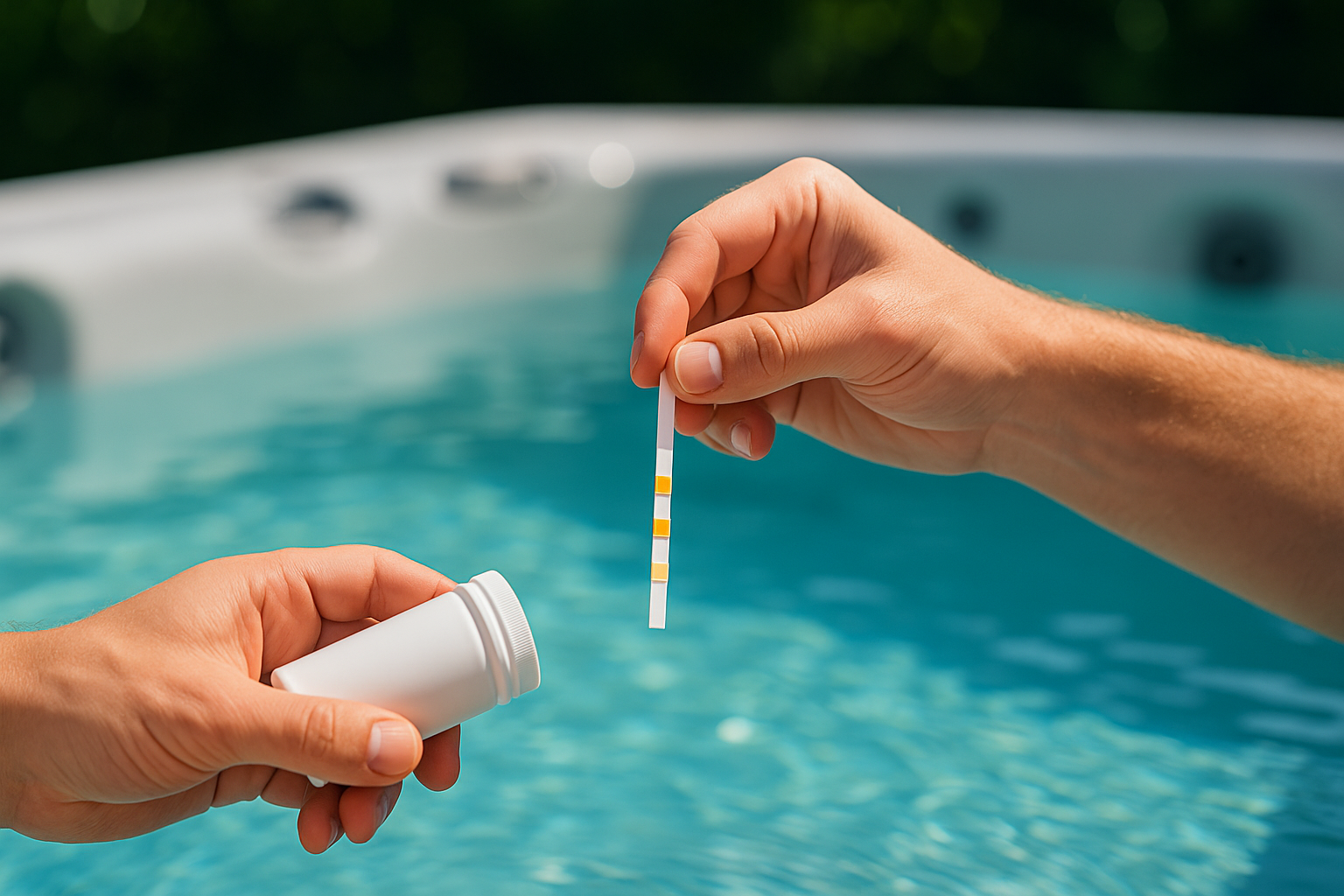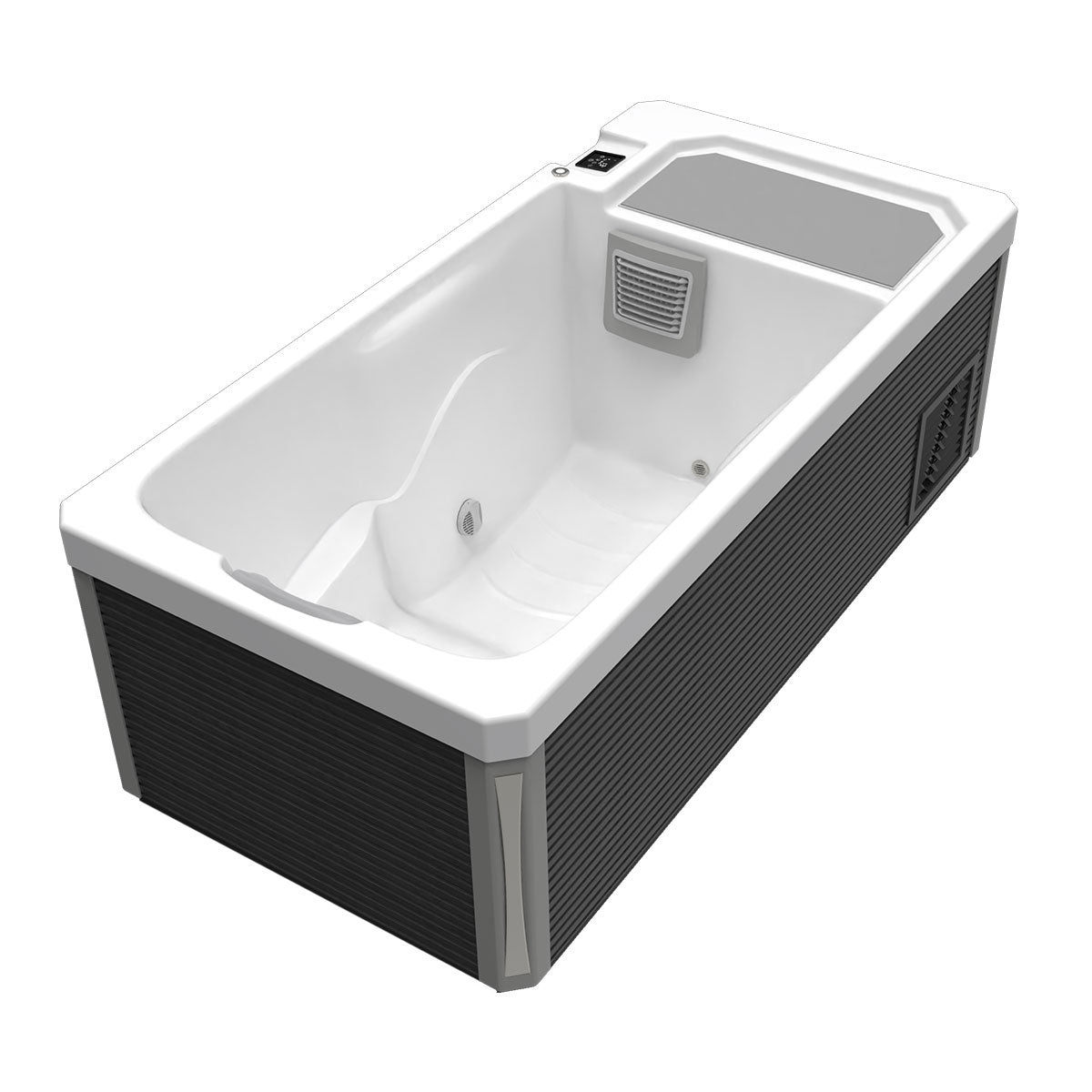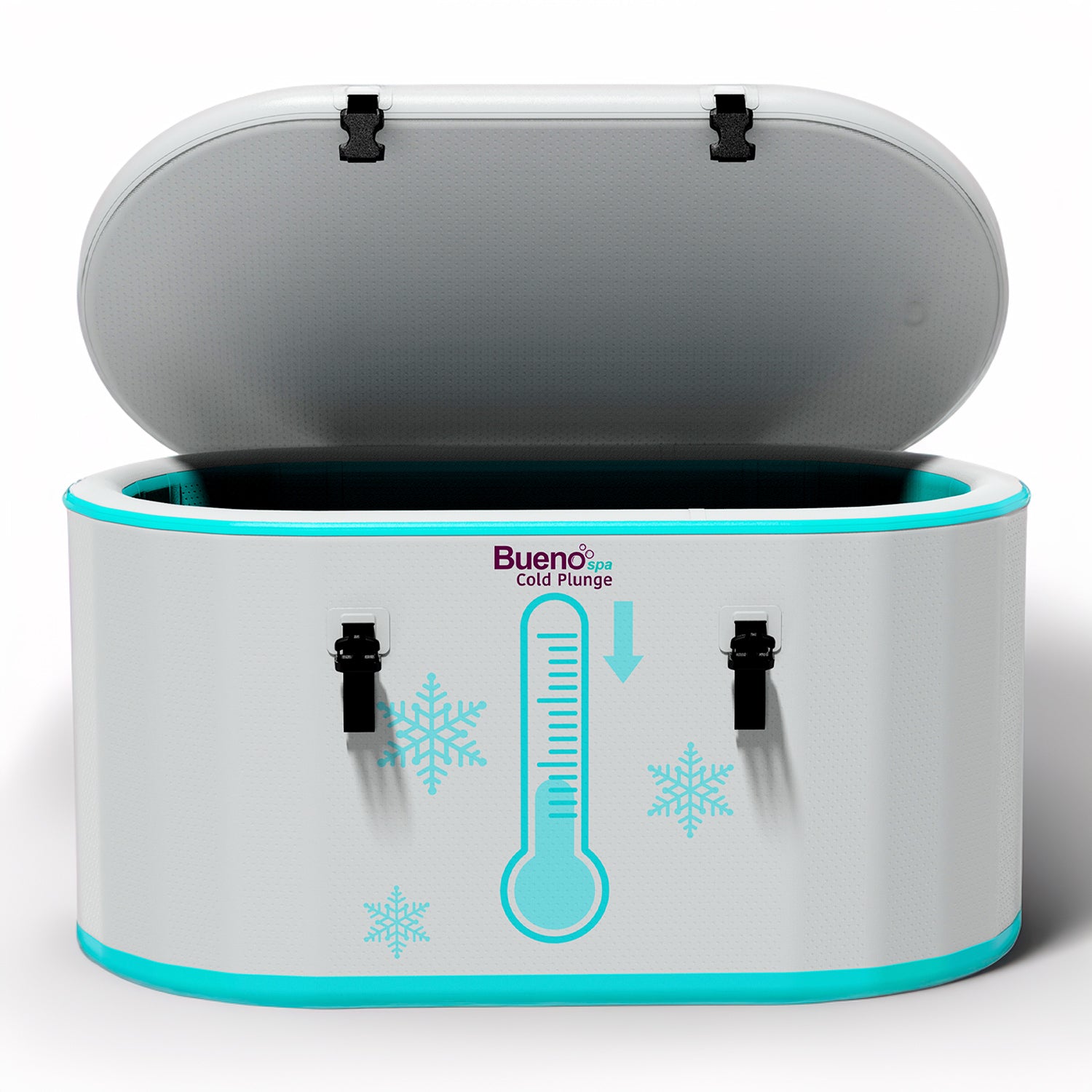It’s all about balance when it comes to hot tub pH. Too high and you have water that offers perfect conditions for bacteria to grow and, in some cases, even makes your hot tub dangerous to use. So, you need to know how to decrease pH in hot tub water to avoid these problems. In this guide, we show you how to balance pH in a spa and explain why it’s so important to stay on top of your water’s chemical levels.
What Is pH in a Hot Tub and Why Does it Matter?
Before we explain how to reduce pH in hot tub water, you need to understand why pH matters in the first place.
Understanding pH Levels
The pH scale is a measure of your water’s acidity and alkalinity. The scale runs from 0 to 14, with 7 being neutral. Anything below 7 is considered acidic, and anything above being alkaline, or “basic.” Your hot tub’s pH should be slightly alkaline, with the ideal level being anywhere between 7.2 and 7.8. Water in that range minimizes maintenance issues caused by water that is too far from neutral and delivers a more comfortable experience to the hot tub user.
There’s also another term to cover here – alkalinity. Many people conflate this term with alkaline, but they mean different things. Water’s alkalinity denotes its ability to neutralize or absorb changes in acidity. Alkalinity is related to pH – high alkalinity reduces water acid levels – but they’re not the same thing.
Signs That Your Hot Tub’s pH Is Too High
There are a few signs that you have a high pH in hot tub water including the following:
- There’s a white and chalky buildup – called “scale” – forming on your hot tub’s jets and shell.
- Your hot tub’s water is cloudy or murky.
- You’ve noticed that sanitizers, such as bromine and chlorine, are less effective than they should be.
- You experience skin or eye irritation during or after you’ve used your hot tub.
How to Measure pH in a Hot Tub
Before you can reduce pH in hot tub water, you need to measure the water’s pH to determine its chemical composition. There are three options:
- Test Strips – Easy to use and affordable, test strips are the quick option. You dunk them in your hot tub’s water until they change color, then check that color against a provided chart. Unfortunately, test strips offer more of an approximation than a true pH level.
- Liquid Test Kits – Often used by professionals, liquid testing involves taking a sample of your hot tub’s water and adding a chemical – known as a reagent – to that sample. The reaction between the reagent and the water indicates the pH level to deliver a reliable result.
- Digital Testers – The most accurate way to test your water’s pH is also the most expensive. However, digital testers can track your water’s pH level in real-time so you can tweak it as needed.
How Often Should You Test pH?
We recommend adding testing to your routine hot tub maintenance at least twice per week if you use your hot tub at least three times per week. It’s also a good idea to test before and after heavy usage – such as a hot tub party – and whenever you cycle out your hot tub’s water. New water usually means new hot tub chemicals and pH testing helps you achieve the right balance with those chemicals.
The Effects of High pH in a Hot Tub
Though we’ve briefly mentioned some of the effects a high pH can have on you and your hot tub already, it’s worth going into more detail about the main three problems.
Water Quality Issues
A high hot tub water pH leads to your water becoming cloudier – almost looking dirty – and results in scale buildup on surfaces and key components. The latter is a major problem when it comes to maintenance. Scale slowly clogs jets and filters, reducing their efficiency and forcing replacements.
Health and Comfort Concerns
Improper hot tub water chemistry can negatively affect your skin and eyes. Skin often feels dry or irritated after hot tub use when the pH level is too high. You may even feel this irritation while in the hot tub. As for your eyes, they may also feel itchy and may become red due to high alkaline levels.
Hot Tub Component Damage
Beyond the issues with jets and filters, the mineral deposits created by water with a high pH corrode your hot tub’s pumps and internal plumbing. Heater elements also suffer this corrosion, with the net effect being a costly one – shortened component lifespans requiring you to spend more on hot tub maintenance.
How to Lower pH in a Hot Tub
Reducing your hot tub’s pH level isn’t a simple case of throwing chemicals into the water mix until you get the right reading. You need to have safe chemicals for lowering hot tub pH ready and understand the appropriate steps for adjusting your water’s pH level.
Step-by-Step Guide to Reducing pH Levels
The following steps detail how to lower pH in a hot tub safely.
Step 1: Test the Water
Use the testing method of your choice to determine your water’s pH levels. Expect this to differ depending on where you keep your hot tub. For instance, outdoor hot tubs often have more acidic water due to the effects of being exposed to rain.
Step 2: Adjust Alkalinity (If Necessary)
Raise your water’s alkalinity using an alkalinity increase – which usually contains sodium carbonate – or baking soda. High alkalinity can prevent pH reduction, which keeps the water from becoming too acidic.
Step 3: Choose the Right pH Reducer
You have two choices in pH reducers – sodium bisulfate and muriatic acid. The former (also known as “dry acid”) is the most common and the safest option. Muriatic acid is a more aggressive pH increaser and requires careful handling so you don’t burn your skin.
Step 4: Add Your Chemical Gradually
No matter which pH reducer you use, slow and steady always wins the race. Add the chemical to your hot tub water gradually while following the manufacturer’s recommendations. Avoid overcorrecting. It’s better to use too little at first and add more later than it is to overdose your hot tub water. Going overboard means you’ll have to readjust using a pH increaser.
Step 5: Let The Water Circulate
With your pH reducer added, turn on your hot tub and allow the water to circulate. We recommend leaving your hot tub on for between two and four hours, although this time can differ based on the size of your tub.
Step 6: Retest the Hot Tub’s pH
Don’t jump into your hot tub until after the water’s circulated for a few hours. Re-test the water’s pH level to see if you’ve hit the ideal 7.2-to-7.8 range. If you haven’t, repeat Steps 3 through 5 again (using a pH reducer or increaser depending on your test results) then test again. Keep repeating the steps until you achieve a pH within the ideal range.
Step 7: Take Steps to Prevent High pH in the Future
So much of how to decrease pH in hot tub water comes down to maintenance. The following tips help you maintain the appropriate pH levels:
- Achieve proper chemical balancing by only using the recommended amounts of chemicals in your hot tub.
- Use high-quality sanitizers that don’t cause pH level spikes.
- Maintain a water alkalinity level of between 80 and 120 parts per million.
- Test your water’s pH at least twice per week, both before and after heavy usage.
- Drain and refill your hot tub water – along with adding new chemicals – every three to four months.
Master Spa Water pH Adjustment with BuenoSpa
You now know everything you need to do to reduce pH in hot tub water. Tracking pH levels is essential, as is understanding what a high (or low) pH means for your body and your hot tub. Follow the steps we’ve provided and you’ll ensure that chemical imbalances don’t affect your hot tub experience.
BuenoSpa wants to make that experience as delightful as possible.


 (888) TO - BUENO
(888) TO - BUENO
